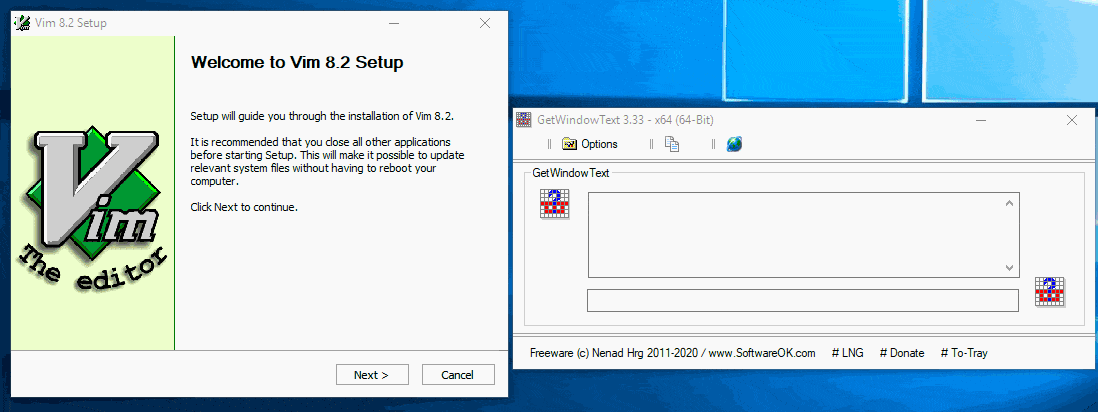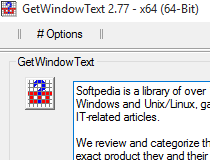

But, in most cases, you want the control to share a font owned by the parent (usually, the dialog font). True, the latter option is convenient when you have a control with a unique font, e.g. So for more flexibility and compatibility it would be better if the control used SetWindowFont and GetWindowFont, and only optionally stored a private font. Most often you want to share the same font among many controls.

Also, having every control create a font may be costly. The user must specify the font in the TFontText constructor, and after that there is no interface to access it.

Similarly, calling SetWindowFont and GetWindowFont on your control does not set and get the font actually used to render the text.
GETWINDOWTEXT TO SETWINDOW TEXT WINDOWS
So you can eliminate your internal text buffer (which by the way, is prone to buffer overflow) and be fully compatible with the Windows API by simply using SetWindowText and GetWindowText.Īside:: Note that TStatic (for some reason, probably brevity) also has SetText and GetText, which are just wrappers around SetWindowText and GetWindowText. All classes derived from TWindow support SetWindowText and GetWindowText, which are wrappers around the Windows API functions of the same name, which in turn are wrappers around the messages WM_SETTEXT and WM_GETTEXT. However, you don't need to provide an alternative interface, and you don't need to buffer the control's text. The user must use your alternative interface: SetText and GetText. Unfortunately, while your TFontText control looks nice and easy to use, it is at odds with the Windows API design, and it also needlessly duplicates some functionality.įirst off, calling SetWindowText and GetWindowText on your TFontText control does not set and get the text actually rendered.
GETWINDOWTEXT TO SETWINDOW TEXT CODE
So I was interested to see if your code could provide a simpler solution that could be integrated into OWLNext. Setting text colours for controls is unfortunately awkward in OWLNext - as it is in the bare Windows API. Joking aside, I looked at your code with interest, in particular because we have had a few discussions lately about users having problems with control colours. It could prove most helpful in situations where windows overlap and cause even more chaos.You're not going to to like this - I have reviewed your code. In order for the user to enjoy even more freedom and flexibility when using this app, its transparency can be adjusted.

Other situations include looking up the name of a certain app or document whose name is lodged in the app's window. With this application, the process of researching and finding any issue's origin and fix becomes much, much easier. In order to copy the error text itself, it can be a total nuisance. Probably the best scenario that comes to mind when talking about such apps is that of weird errors that pop up and force the user to research their origin. Basic functions that have to do with the app being minimized or closed, always on top, or started with your OS are also included, but this shouldn't come as a surprise. These options include the ability to read and list tree views, read columns from the list view, and also read selection fields. Still, all functions can easily be found in its only menu. Since we're talking about a tool here, this program doesn't really sport a fancy interface. You make use of the app crosshair icon to indicate which window you need the text from, and the app immediately displays it in its window. In terms of used mechanisms, the idea is pretty simple. It's of great help because it also copies whatever content it grabs to the clipboard, allowing you to further use it in your various queries. GetWindowText is an application designed to help users grab text from various application windows, where it would be otherwise difficult to copy that phrase, error code, or written line.


 0 kommentar(er)
0 kommentar(er)
